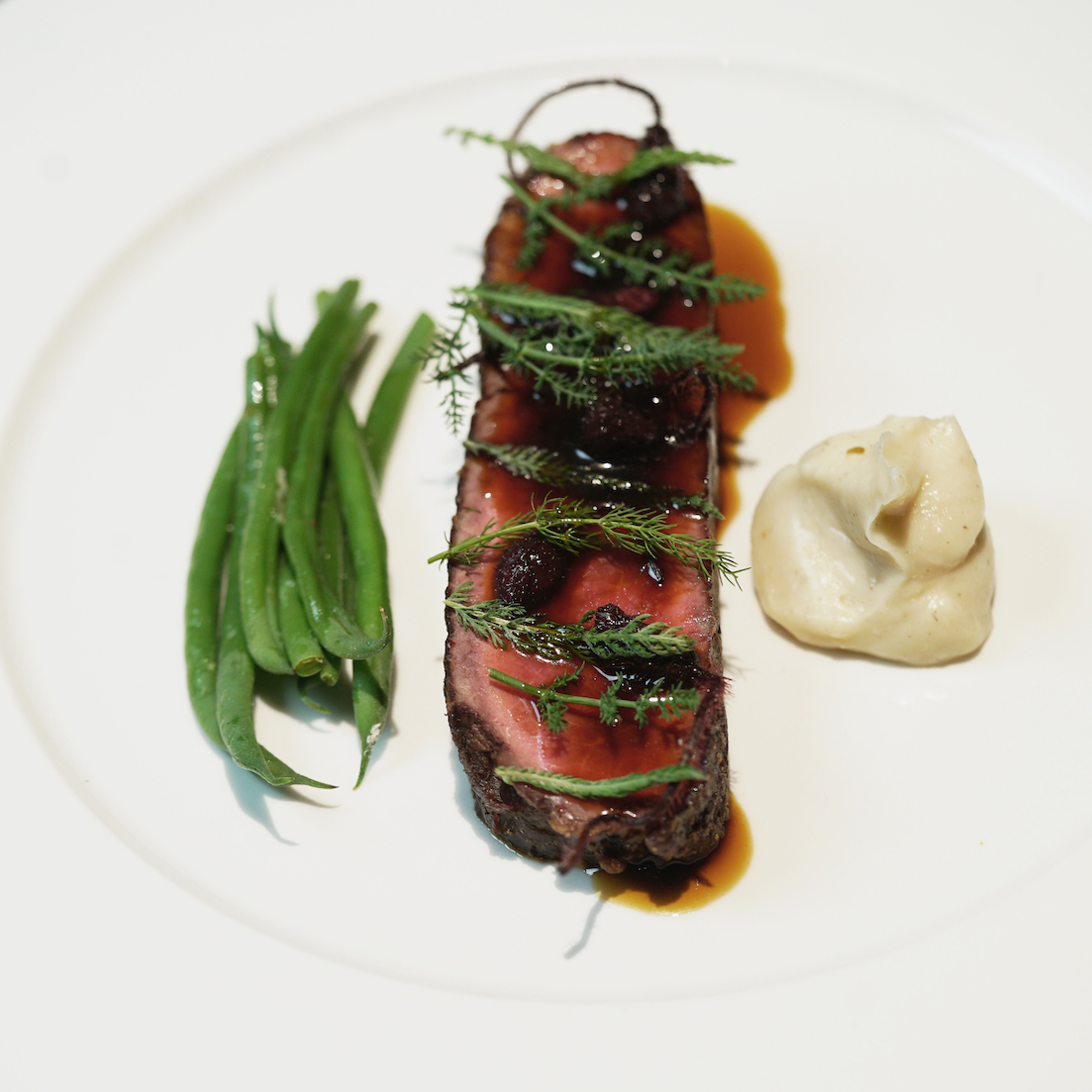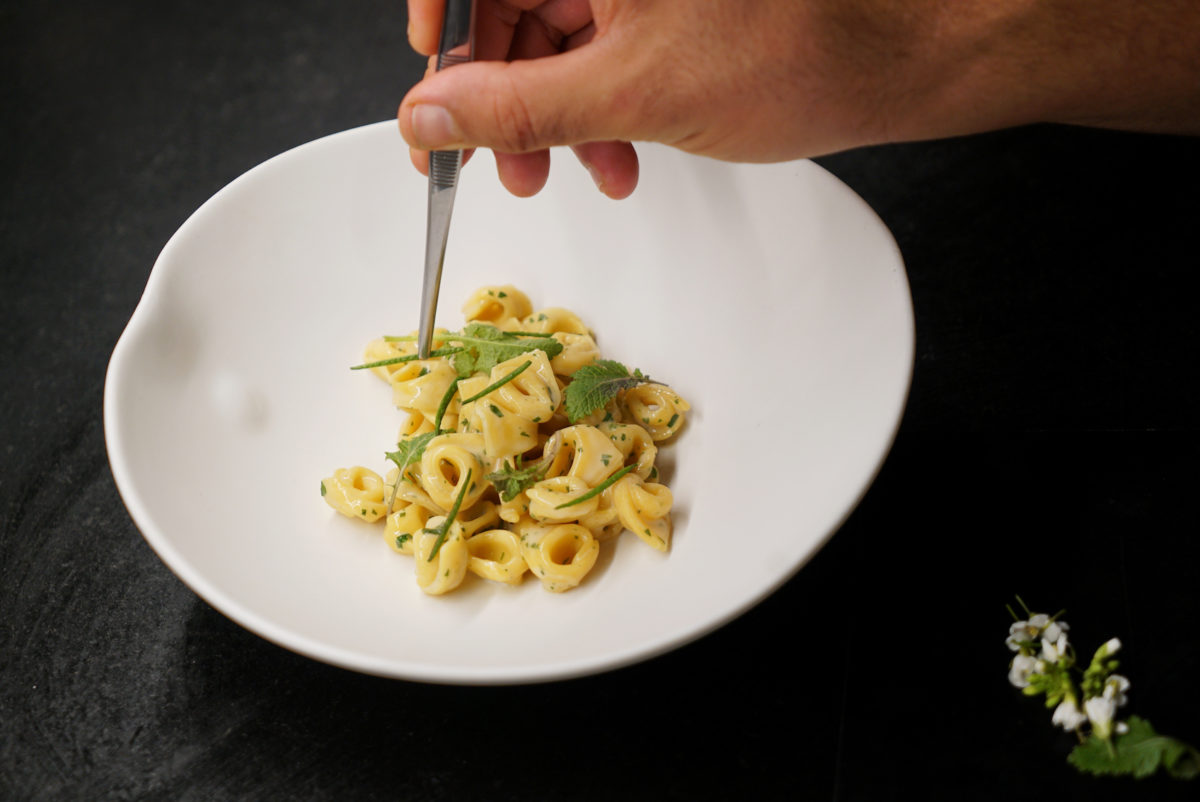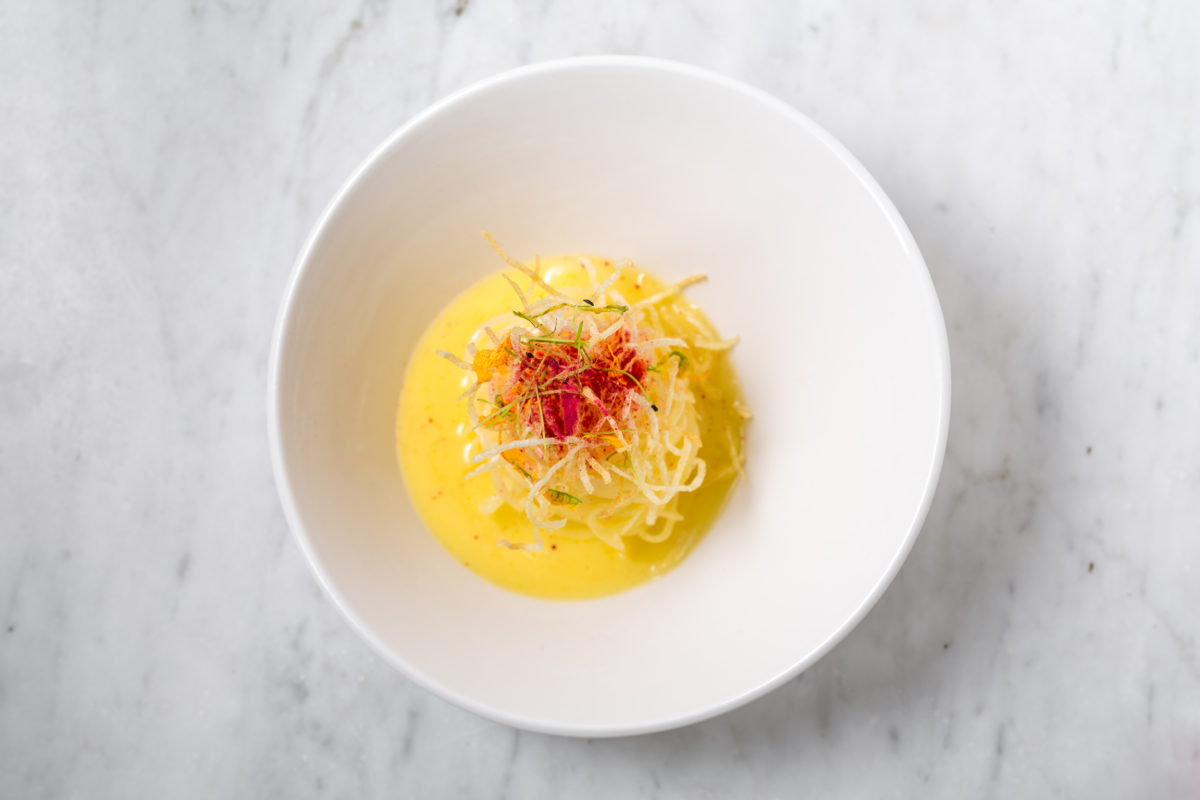It’s all about food in Rome, and it’s always been that way. Artichokes (braised or fried), pasta alla carbonara, and Cacio e Pepe are the foundations of the Roman food scene—what you greedily anticipate when planning a Roman getaway.
That’s all about to change. Below, a line up of chefs, pizza makers, and restauranteurs who are redefining casual dining and upgrading the trattoria to 21st-century style while keeping up the Roman tradition of stellar food.
The leaders in this new restaurant space is the team behind Retrobottega, led by chefs Alessandro Miocchi and Giuseppe Lo Iudice. A few years back, Miocchi and Lo Iudice opened Retrobottega as an experimental kitchen, from its dishes and execution to its service and style. Sleek with dark tones, woods, and open-kitchen stations at communal tables, Retrobottega is the diametric opposite of the old school trattoria—and that’s the point.
Miocchi and Lo Iudice want you to rethink Rome while experimenting with familiar (and not so familiar) dishes. Creative, seasonal, local, foraged—yes, all the buzz words—but the team hits the right beats. While most of the cooking happens in the kitchen, all dishes are prepped, assembled, and plated in front of you. Plus, Retrobottega has just launched the city’s most ambitious tasting menu, 20 Bites, a multi-course menu. With two reservation windows, 6:30 p.m. and 9:30 p.m., it’s the most innovative meal in the city.
Bistrot 64 fits perfectly into the arts scene of the Flaminio neighborhood, an area north of Rome’s center with contemporary monuments like the MAXXI, Ponte della Musica, and the Parco della Musica. A contemporary gastro-bistro, Bistrot 64 is quietly leading the culinary creatives of the city. Japanese-born, Italian-trained chef Kotaro Noda takes a more modest approach to the bistro with a minimal, modern, and moody decor while combining Japanese technique and flavors with Roman tradition. His dishes are an evolution happening right in front of you, like his inimitable spaghetto di patate burro e alici, a potato spin on the old favorite butter and anchovy. Sticking to the tenets of a proper bistro, Bistrot 64 is all about good food and good prices and has the best-priced tasting menu of any Michelin star restaurant in Rome.
Osteria Fernanda is not the typical osteria (restaurant with simple food). Hidden away on the edge of Trastevere, the restaurant looks more like a hipster wine shop with its white walls, wine-filled shelving, and natural woods. Chef Davide Del Duca keeps up the contemporary vibe with dishes that mix innovation with local traditions, contrasting flavors with creative and sometimes overlooked ingredients like roots and offal. His Trenta Minuti (30 minutes) and Quaranta Minuti (40 minutes) business menus are the cleverest in Rome, impeccable and affordable tastes of Del Duca’s cuisine.
If you’re suddenly in the mood for pasta and wine, these mouthwatering spots are also Here editor-approved.
Marigold, a trattoria with a Scandinavian vibe: More hygge, less hype, with a large dining space and family-style and private tables, the restaurant is minimally decorated with Chef Sofie Wochner’s handpicked ceramics and floral arrangements. Marigold is both micro-bakery and restaurant, the foodie love child of Wochner, who helms the bakery, and partner/chef Domenico Cortese, who works behind the burners in the kitchen.
Marigold’s pastries and brunches have a serious following, but the true showstoppers are the sustainable creations for dinner and lunch: made-from-scratch mustard aioli, incredible breads, and dishes like slow-cooked Korean pork belly. Wochner and Cortese’s goal is super-sustainability—what was on the menu last night may somehow appear in lunch the next day. The focus is on seasonal products, small local producers, and foraged greens.
Read how the vintage shopping scene is transforming Rome’s Monti neighborhood into a hotspot for sustainable living.
Seu Pizzeria Illuminati plays against the trope of the traditional Roman pizzeria. First, the pizzeria itself has the vibe of an art gallery—dark tones, designer furniture, and contemporary art—but it doesn’t forget its focus with its open forno (oven) area. Second, Seu knows that the dough is fundamental to good pizza and favors the thicker, chewy Neapolitan style.
While his menu features classics like Margherita, Napoletana, and marinara, it’s all about the Seu pizzas, where PierDaniele’s creativity explodes. Because Seu uses only seasonal and local or regional products, his menu changes every few months, so expect the unexpected and consider yourself lucky if the Gamberita, an exquisite pizza of raw red shrimp on fresh Buffalo mozzarella, is available for your enjoyment.
Santo Palato is a tiny trattoria in Rome’s San Giovanni neighborhood. On the surface, Santo Palato seemingly plays into the favored trope of the rustic, rough-around-the-edges trattoria. But scratch the surface and you’ll find chef Sarah Cicolini’s refined look at Rome’s offal heritage—in technicolor. Cicolini celebrates the ingenuity of Roman cuisine and local produce with unexpected dishes like rigatoni con la pajata (intestines of suckling calf) and a veal tongue terrine with giardiniera (pickled vegetables).











